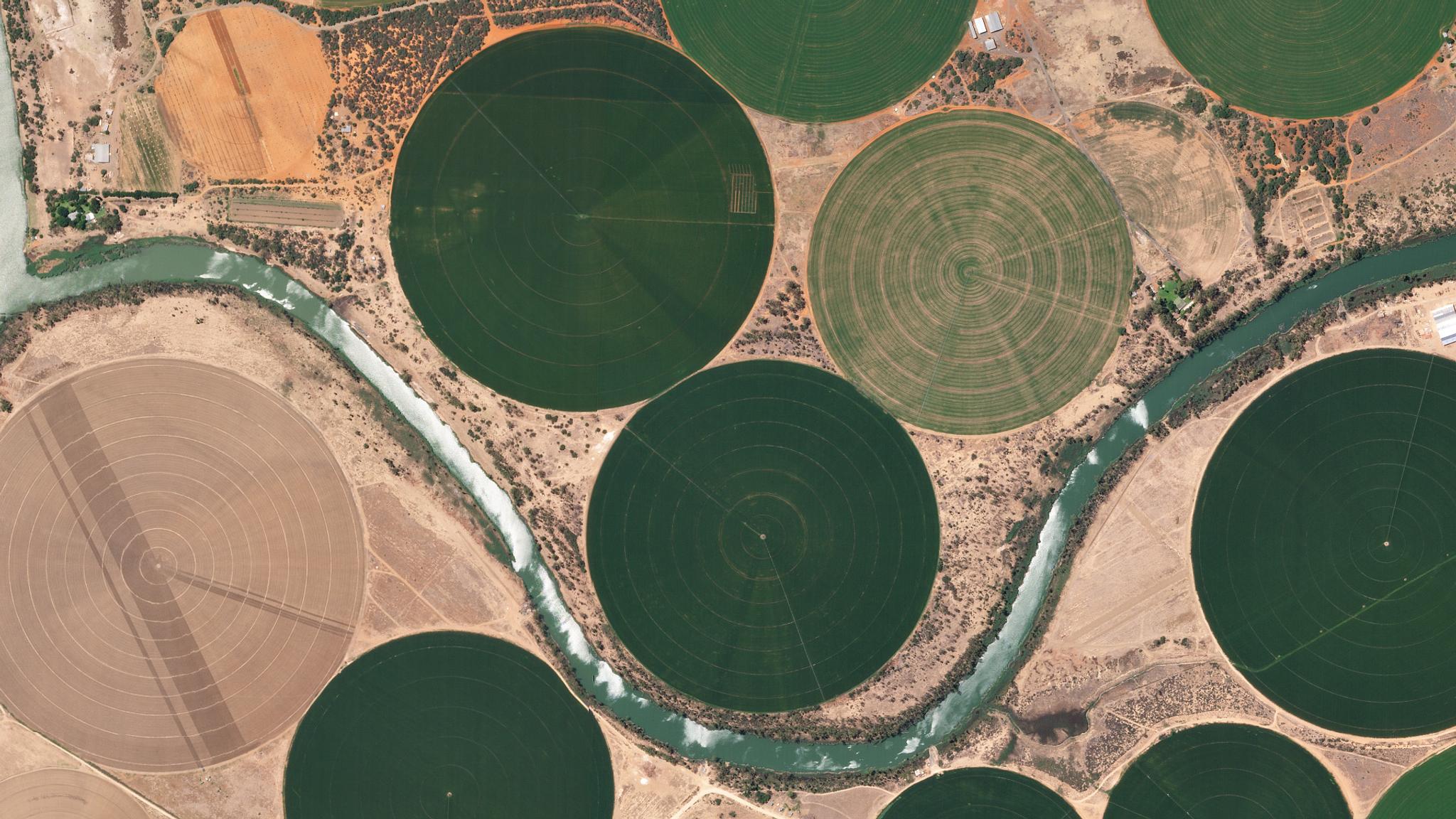Carbon Farming—What is it and what does it mean for global sustainability efforts?

Central pivot irrigation in Douglas, South Africa on June 11, 2018, (c) 2018, Planet Labs Inc. All Rights Reserved.
StoriesCan carbon farming provide a sustainable way to make agriculture truly green? Are there ways Earth Observation companies like Planet can play a key role in this transition? First, let’s discuss the challenge we face. The threat of climate change is radically changing the world and farmers are feeling the effects as they seek to increase yields while battling extreme weather events, accelerating crop diseases, and price uncertainty. At the same time, there is growing pressure on agriculture to adopt more sustainable farming practices. Growing crops and raising livestock account for nearly 50% of the Earth’s habitable land. Land is a precious commodity but so too is water; agriculture accounts for about 70% of water use. Further, emissions produced by the sector (including agriculture, forestry, and land use) are responsible for about 25% of total greenhouse gas (GHG) emissions. Regenerative agricultural practices, also known as carbon farming, cover a variety of agricultural methods aimed at carbon sequestration, which is the capture of atmospheric carbon dioxide into soil. When plants die, the carbon they store during photosynthesis is either released back into the atmosphere or stored for long periods of time in the soil. Many conventional agriculture practices such as tilling result in the release of carbon, while practices classified under carbon farming aim to do the opposite by putting and keeping the carbon back in the soil. Examples of carbon farming methods include minimal or no plowing of fields, rotating crops, and planting cover crops. There is a lot of excitement around carbon farming, but also caution that we need more research to figure out how much carbon can actually be sequestered by farmers. Despite this, private corporations, public governments and other entities worldwide are showing optimism regarding carbon farming and are making investments to explore its potential and feasibility. The hope is that it will help the agriculture sector tackle climate change and help decrease damaging impacts such as biodiversity loss, desertification, falling yields, as well as improve productivity to ensure meeting the needs of a growing global population. This is just the beginning and momentum will continue around the globe on this topic. Stay tuned for Part II of this series where we will be sharing how satellite data can help monitor and assess regenerative agricultural practices. In the meantime, head over to our Agriculture page to learn more about our solutions. ___ This three-part blog series explores how carbon farming might help fight climate change. Part I of the series explains what carbon farming is and what is its promise in the road to carbon neutrality. Part II focuses on the role Earth Observation can play in providing the necessary evidence for the construction of efficient carbon credit markets and what we are already doing at Planet. The final blog examines carbon sequestration as part of the European Union’s Green Deal and climate strategy.

Ready to Get Started
Connect with a member of our Sales team. We'll help you find the right products and pricing for your needs

